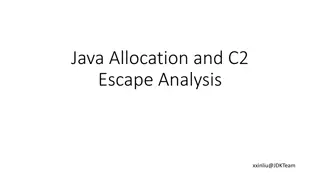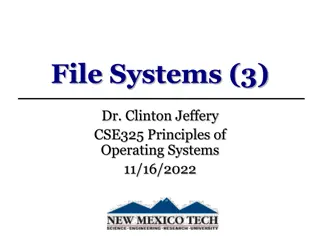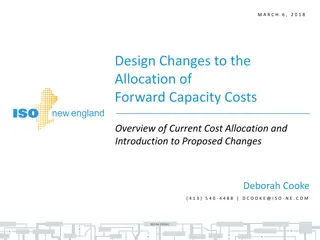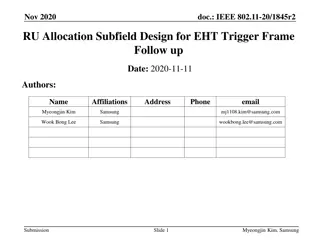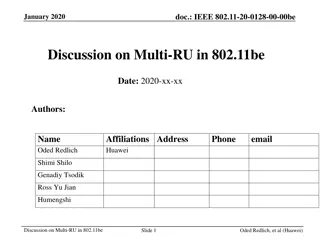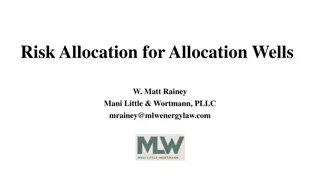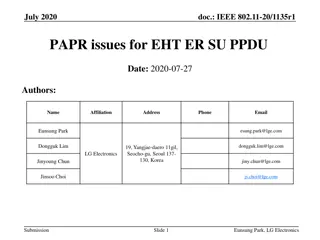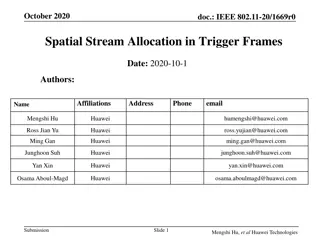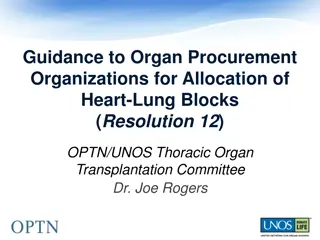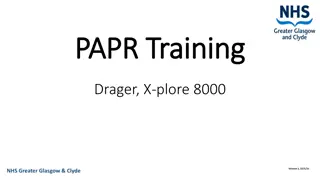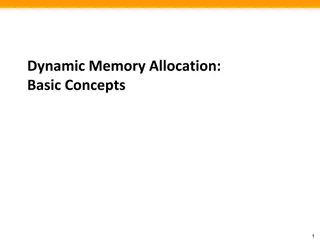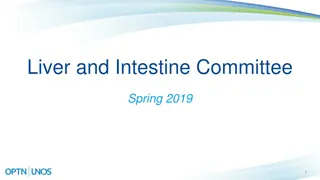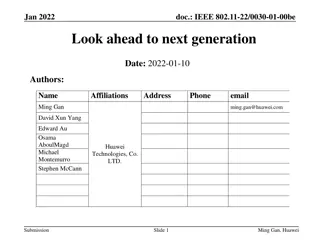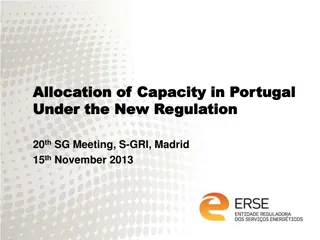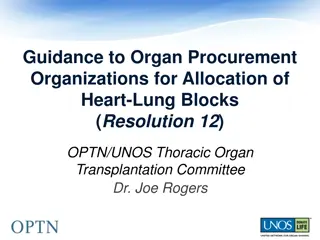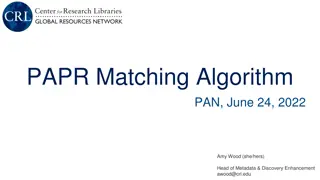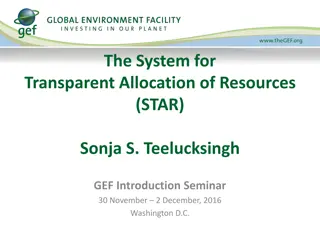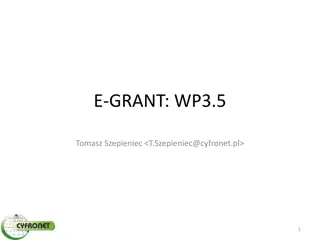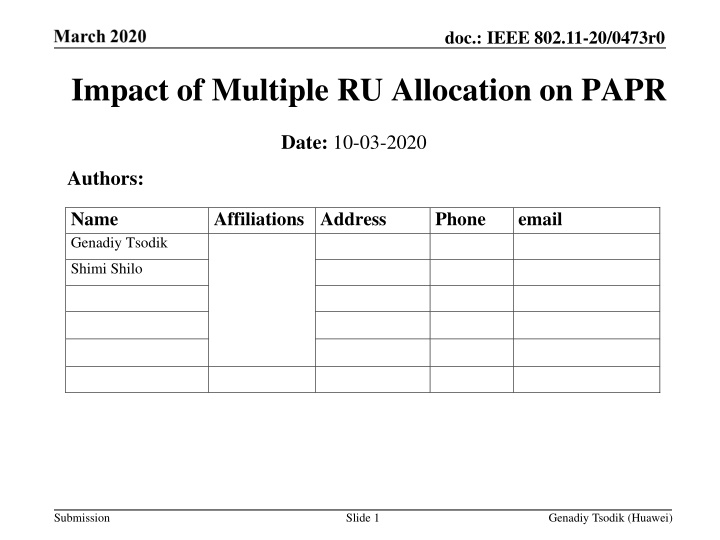
Impact of Multiple RU Allocation on PAPR in IEEE 802.11-20
Explore the impact of Multiple RU Allocation on Peak-to-Average Power Ratio (PAPR) in IEEE 802.11-20, focusing on issues, challenges, and possible solutions for larger bandwidths and Multi-RU scenarios.
Download Presentation

Please find below an Image/Link to download the presentation.
The content on the website is provided AS IS for your information and personal use only. It may not be sold, licensed, or shared on other websites without obtaining consent from the author. If you encounter any issues during the download, it is possible that the publisher has removed the file from their server.
You are allowed to download the files provided on this website for personal or commercial use, subject to the condition that they are used lawfully. All files are the property of their respective owners.
The content on the website is provided AS IS for your information and personal use only. It may not be sold, licensed, or shared on other websites without obtaining consent from the author.
E N D
Presentation Transcript
doc.: IEEE 802.11-20/0473r0 Impact of Multiple RU Allocation on PAPR Date: 10-03-2020 Authors: Name Genadiy Tsodik Affiliations Address Phone email Shimi Shilo Submission Slide 1 Genadiy Tsodik (Huawei)
doc.: IEEE 802.11-20/0473r0 Introduction 802.11be introduces a new type of allocation where multiple RUs may be assigned to the same STA(s) or group of STAs The aggregated RU may be contiguous or non-contiguous in frequency Multi-RU (MRU) introduces new issues and challenges that need to be addressed in 802.11be In this presentation we are focusing on the PAPR issue, which might be reexamined with respect to larger BW, puncturing and especially MRU see also [1], [2] We will show the PAPR impact caused by an MRU allocation; we examine the problem and provide a summary of possible solutions Submission Slide 2 Genadiy Tsodik (Huawei)
doc.: IEEE 802.11-20/0473r0 Problem Formulation LTF/STF sequences are designed and optimized for the entire BW, especially in terms of PAPR, while each RU is a subset of the main sequence If in case of MRU allocation type a sub-sequence (portion) of EHT-LTF is transmitted in each RU, (e.g. reusing of existing HE-LTF sequences), the resulting PAPR might be increased (compared with the PAPR of a single RU) It can be explained theoretically as a superposition of two transmitted waveforms, where the high peaks of each of them may be located at the same time samples and thus result in a higher peak 1st RU 1st RU MRU 2nd RU 2nd RU Frequency High Peak Time Submission Slide 3 Genadiy Tsodik (Huawei)
doc.: IEEE 802.11-20/0473r0 Impact on PAPR In the figures below we show the impact of MRU on PAPR of HE-LTF, where we use HE-LTF sequences of 11ax per each RU within an MRU We show an example for specific RU sizes over all the possible MRUs (x- axes represents indexes of RUs in an MRU, i.e. 15 in figure of 106+26 means 1st 106-tone RU and 5th 26-tone RU) We can see the PAPR is increased by 1.5-2dB in case of large RUs and 1.5- 3dB in case of small RUs Submission Slide 4
doc.: IEEE 802.11-20/0473r0 Why is PAPR on EHT-LTF an Issue? We also checked the impact of PAPR on data portion in case of an MRU As we can see in the figure below, the PAPR of the data portion is increased by 0.5-1dB which is a significantly smaller impact than on the PAPR of the EHT-LTF It means that higher backoff may be required If impact on CHEST is significant, back-off will be mandated by the EHT-LTF PAPR Submission Slide 5
doc.: IEEE 802.11-20/0473r0 Impact of EHT-LTF MRU PAPR on PER The higher PAPR associated with the EHT-LTF sequences of an MRU impact the channel estimation and hence the demodulation performance This issue is especially problematic for devices with simple/low complexity PA design, which for example do not include a DPD We checked the impact of higher MRU EHT-LTF PAPR on the PER by simulating the same scenarios with random sequences with different PAPR Submission Slide 6 Genadiy Tsodik (Huawei)
doc.: IEEE 802.11-20/0473r0 Short (Temporary) Summary We ve shown that for an MRU allocation there is an impact on PAPR, especially on the EHT- LTF, thus any transmission allocated on partial BW may suffer from performance degradation: UL MRU NDP reflecting MRU allocation (similar to punctured NDP) DL MRU (especially non-OFDMA transmissions) Back-off adjustment that is usually used in order to minimize non-linear components due to high PAPR is not an optimal solution in this case (impact on data portion is much smaller than the impact on EHT-LTF) Thus we would like to provide a solution where the PAPR in case of MRU is minimized with additional focus on the following two metrics: Small number of EHT-LTF sequences (similar to 11ax) Simple definition in spec (few changes) Reasonable implementation complexity In the next slides we will list several solutions and examine them in terms of PAPR reduction and the two metrics above Submission Slide 7 Genadiy Tsodik (Huawei)
doc.: IEEE 802.11-20/0473r0 Straight-Forward Solution The straight-forward way to overcome this problem is to design new EHT-LTF sequences that minimize the PAPR in case of MRU We can see in the figure below that this indeed may significantly reduce PAPR (different sequences achieved minimal PAPR in different MRU combinations) However, this method has several drawbacks: 1.2dB Specific sequence should be designed for each MRU combination (same RU within different RU combination cause different PAPR and thus same sequence can not be applied for all the cases) Different EHT-LTF sequences will be used for MRU and single RU transmissions increases implementation and memory complexity Every solution based on a single EHT-LTF sequence can not be optimal for all the MRU combinations and requires a different solution for MRU and single RU Submission Slide 8 Genadiy Tsodik (Huawei)
doc.: IEEE 802.11-20/0473r0 Reusing 802.11ax Solution PAPR reduction is considered in 802.11ax for large BW where the solution is based on simple and constant phase rotation applied to 20MHz channel portions (rotation for all tones by ?,?, ? 2 and ? 2 ) We can see in the figure on the right that applying a constant phase rotation for the same 20MHz can not optimize all the cases in terms of PAPR 0.5dB For example in case of 80MHz, PAPR remains almost the same with and without phase rotation (reduced by less than 0.5dB) Moreover, this solution is not relevant for small RUs and thus additional solutions are required for an MRU within 20MHz Submission Slide 9 Genadiy Tsodik (Huawei)
doc.: IEEE 802.11-20/0473r0 Extended 802.11ax Solution We can extend 11ax solution by applying constant phase rotation per RU where phase value is selected with larger granularity to optimize every MRU independently ( e.g. from some predefined range, { ?, ? , ?} ) ? , , We can see that for most of the examined cases PAPR is reduced by 0.5dB or less where we used 9 possible phase values (only three of all the examined combinations showed PAPR reduction of ~1dB) 0.5dB Submission Slide 10 Genadiy Tsodik (Huawei)
doc.: IEEE 802.11-20/0473r0 Linear Phase As explained before, higher PAPR peaks are produced by combination of multiple waveforms, thus if we shift the waveforms in time domain (cyclically) we may possibly spread the high peaks in time and thus reduce the PAPR This is equivalent to applying different linear phase for each RU in frequency domain, (k-th tone of i-th RU will be multiplied by ??2????) We can see in figures below that this method reduces the PAPR by 1-2dB (linear phase and phase offset with granularity of ? High Peak Time Cyclic Shift in Time Domain Time 64 and ? 4 respectively ) 1dB Submission Slide 11 Genadiy Tsodik (Huawei)
doc.: IEEE 802.11-20/0473r0 Linear Phase with Offset Different linear phase in frequency domain implies different cyclic shift while phase rotation implies non-coherent combination of the waveforms We can combine both solutions, i.e. k-th tone of i-th RU will be multiplied by ??????2????, where ?? is a phase offset and ?? is a linear phase We can see that combining linear phase with phase offset provides additional PAPR reduction of 0.2-0.5dB in some cases 1.1dB Submission Slide 12 Genadiy Tsodik (Huawei)
doc.: IEEE 802.11-20/0473r0 Comparison of Different Solutions Here we show a figure summarizing all the possible solutions for case of MRU 242+484 We can see that the highest reduction in PAPR is achieved by new EHT-LTF sequences (different sequence per each MRU combination) whereas linear phase with phase offset achieves second best PAPR reduction (0.1-0.8dB gap from new sequence) 242+484 Comb Single RU484 MRU PAPR New Sequence Constant Phase Linear Phase Linear Phase + Offset 2/2 5.86 7.03 6.29 6.96 6.95 6.71 1/2 5.86 7.93 6.68 7.42 6.95 6.85 4/1 5.86 7.65 6.68 7.65 6.87 6.82 3/1 5.86 7.8 6.28 7.23 7.16 6.9 Submission Slide 13 Genadiy Tsodik (Huawei)
doc.: IEEE 802.11-20/0473r0 Summary In the table below we summarize the reviewed solutions and compare them in terms of PAPR reduction and also design and implementation aspects It is clear that the linear phase method combined with phase offset yields good results with reasonable design and implementation complexity Two last methods require similar implementation complexity while additional memory is required to store phase offset values per MRU (moreover those method are applicable for 2X and 1X LTF formats with no additional design) Design/Spec Complexity Backward Compatibility Solution PAPR Reduction Implementation Complexity High - A lot of sequences to define High - large memory required New Sequnce Design High None Reuse 11ax Phase Rotation Constant Phase Rotation Very low None None Full Full (by setting phase to zero) Full (by setting phase to zero) Full (by setting phase to zero) Low Medium Low Linear Phase Medium Meidum Low Linear Phase with Phase Offset High Medium Low Submission Slide 14 Genadiy Tsodik (Huawei)
doc.: IEEE 802.11-20/0473r0 Spec Aspects A set of Linear Phase and Phase Offset values need to be defined in the spec (similar to CSD definition) For each MRU combination a specific value from the defined set will be applied while both Tx and Rx sides will use the same value when a specific MRU is allocated (no need for additional signaling per packet) We checked the PAPR with different granularity of linear phase and phase offset it appears that 32 values are enough to be defined (see figure on the right) ?, ?15 16, ,?15 16,? Phase offset may be defined with smaller granularity as a subset of the same set thus no additional definition is required For each RU in specific MRU combination, a specific linear phase and phase offset values will be defined from the set above (e.g. by indices from the set) Submission Slide 15 Genadiy Tsodik (Huawei)
doc.: IEEE 802.11-20/0473r0 Conclusion PAPR is increased in case of MRU transmission and need to be reduced in order to minimize an impact on channel estimation and PER The main issue in solving PAPR problem is required optimization per MRU single sequence design can not be optimal for all the cases The trade-off between PAPR reduction and design/implementation complexity is a main issue in solving this problem Several approaches are reviewed while linear phase with phase offset method is a preferred solution in terms of PAPR reduction and design complexity Further investigation may be done to study PAPR aspects in general case of punctured BW transmissions Submission Slide 16 Genadiy Tsodik (Huawei)
doc.: IEEE 802.11-20/0473r0 References [1] 11-19-1925-02-00be-consideration-of-eht-ltf [2] 11-20-0117-01-00be-eht-ltfs-design-for-wideband Submission Slide 17 Genadiy Tsodik (Huawei)
doc.: IEEE 802.11-20/0473r0 Straw-Poll Do you support that 802.11be will define a linear phase and phase offset values for minimizing PAPR in MRU allocations? Submission Slide 18 Genadiy Tsodik (Huawei)

